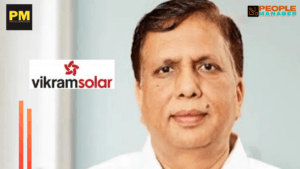Indian Labour Market undergoing a big Structural Reform: SBI Report
The Indian labour market is undergoing a fundamental structural shift, with self-entrepreneurship at all levels and higher education emerging as important enablers. The report argued that the government's Periodic Labour Force Survey (PLFS) survey had been misinterpreted and that the political dispute over it had been misplaced.

India, the world’s most populous country with the most young people, is still trying to find a stable and skilled labour market. However, structural reform can assist the country in performing better with a large, workable population.
According to an SBI report, India’s labour market is undergoing a fundamental structural shift, with self-entrepreneurship at all levels and higher education emerging as important enablers. The report argued that the government’s Periodic Labour Force Survey (PLFS) survey had been misinterpreted, and that the political dispute over it had been misplaced.
“Unemployment is always a contentious and political issue, more so for developing economies, and it is no surprise that even as the unemployment rates in PLFS survey data for the past 5 years have revealed a significant decline, there is a plethora of misplaced and ignorant data interpretations in the public domain, some political, some economic, and laced with old-fashioned rhetoric regarding, for example, the jump in self-employed populace and youth unemployment,” the global
According to the newly issued sixth annual PLFS study, the unemployment rate fell from 6.1% in FY18 to 3.2% in FY2023. According to the research, female labor force participation has increased, with Odisha topping the list, followed by Himachal Pradesh and Uttarakhand.
Female labor force participation is currently at 32%, up from 28% in 2019–2020.
India’s war on informal labour is turning out bad for workers
Himachal Pradesh has the highest ratio (49%), followed by Meghalaya (45%), Sikkim and Nagaland (44%), and Chhattisgarh (42%).
The SBI research supported the idea of expanding the presence of banking correspondents to 33% in order to meaningfully affect the country’s socioeconomic fabric.
Why low unemployment rate hide the full picture?
Furthermore, the report stated that interpreting the increase in self-employed population within employment estimates (57.3% in FY23 now versus 52.2% in FY18) with the main traction coming from the rising share of household helpers evidential as a signal of shrinking employment opportunities, has been incorrectly interpreted by labor economists and others.
India will manage 8% growth by 2030 if more women join workforce, says report
According to the SBI report, the proportion of self-employed people in India’s labor force has always been substantially more than 50%, even from the 1980s and 1990s to the 2000s. Furthermore, it suggested that the government’s emphasis on entrepreneurship through the Pradhan Mantri Mudra Yojana and even recent post-pandemic schemes such as PM- SVANidhi for individuals at the bottom of the pyramid is causing a structural upheaval in India’s labour markets.
Gen Z has enough reason to be anxious about financial security
It argued that the time had come to reconsider the benchmarking of higher educational credentials in PLFS, as education is the most important factor in determining the unemployment rate.
“In the last three years, maximum deceleration in the unemployment rate is visible in the persons having education of secondary and above, and one needs to calibrate the education/employment matrix rationally,” according to the report.
India’s demography demands that we talk about aging before it’s too late
PLFS surveys were launched in 2017 to address shortcomings with the then-existing Employment and Unemployment Survey (EUS-NSSO), such as representation, periodicity, and timeliness, and annual surveys have been conducted and findings have been produced since then.
The report includes unemployment rates for India as a whole and by state, in both rural and urban areas, with various levels of disaggregation such as gender, age, and so on.
“In the last three years, maximum deceleration in the unemployment rate is visible in the persons having education of secondary and above and one needs to calibrate the education/employment matrix rationally,” it noted.
PLFS surveys were initiated in 2017 to overcome the issues of the then-existing Employment and Unemployment Survey (EUS-NSSO) like representation, periodicity, and timeliness and since then the annual surveys have been conducted and reports have been released.
The report provides unemployment rates for all-India and state-wise in both rural and urban areas with different levels of disaggregation like gender, age, etc.
Value our content… contribute towards our growth. Even a small contribution per month would be of great help to us. Since our establishment, we have been serving the industry through daily news and updates.
Our content is free for all, and we plan to keep it that way
Support the People Manager. Pay Here (All it takes is a minute)
- Vikram Solar Appoints Arun Mittal to Lead its Energy Storage Arm - December 3, 2025
- Preventive Healthcare Emerges as a Strategic Investment | Howden Global Employee Benefits Report - November 18, 2025
- Apollo Tyres Ltd and KIIT Announce India’s First Strategic Academic Collaboration - November 18, 2025








